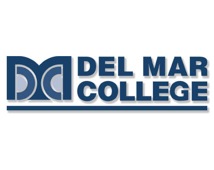Below is a summary of the abstract you submitted. Presenting author(s) is shown in bold.
If any changes need to be made, you can modify the abstract or change the authors.
You can also download a .docx version of this abstract.
If there are any problems, please email Dan at dar78@pitt.edu and he'll take care of them!
This abstract was last modified on May 2, 2019 at 3:02 p.m..

Bacteriophages are viruses that attack and kill their host bacteria. It has been estimated that there are over 10^31 bacteriophages present on our planet and more and more phages have been used for gene therapy and treatment for antibiotic resistant bacterial infections. In this study, isolation of a novel bacteriophage ‘Lucyedi’ began with a soil enrichment procedure followed by several experiments to characterize the isolated phage using its bacteria host Mycobacterium smegmatis. A high titer lysate was harvested for phage genomic DNA isolation. The restriction digest analysis and genomic sequencing were conducted using the isolated DNA. The phage morphology of ‘Lucyedi’ was studied by uranyl acetate negative staining and transmission electron microscope imaging. Lysogens of ‘Lucyedi’ were isolated from spot tests with extra incubation and used for phage efficiency studies on its host. The plaques of ‘Lucyedi’ indicated a lytic life cycle at the time of isolation. The TEM images show ‘Lucyedi’ contains a capsid with 60nm in diameter and a tail 160 nm in length. The restriction digest patterns suggested the ‘Lucyedi’ genome contains multiple recognition sites for BamHI, ClaI, HaeIII and few sites for HindIII and EcoRI. Both the TEM image and restriction pattern imply that ‘Lucyedi’ belongs to the cluster A. The lysogen efficiency test of ‘Lucyedi’ indicated that 99.14% of the host Mycobacterium smegmatis could be destroyed by this bacteriophage, which makes ‘Lucyedi’ a potential candidate to develop a phage treatment for pathogenic Mycobacterium tuberculosis, a close species to M. smegmatis. Lucyedi’s genome has been sequenced by the Pittsburgh Bacteriophage Institute. The dsDNA genome is made up of 92 open reading frames or potential genes, with a genomic length of 52,987 BP and a 61.4% GC content. This particular phage belongs to the Cluster A, Subcluster A16. Cluster A is known as the largest group of Actinobacteriophages with the majority of them being mycobacteriophages. The genome of these phages have defined ends with 3’ overhangs. Currently only two bacteriophages including ‘Lucyedi’ have been identified to belong in Subcluster A16.

